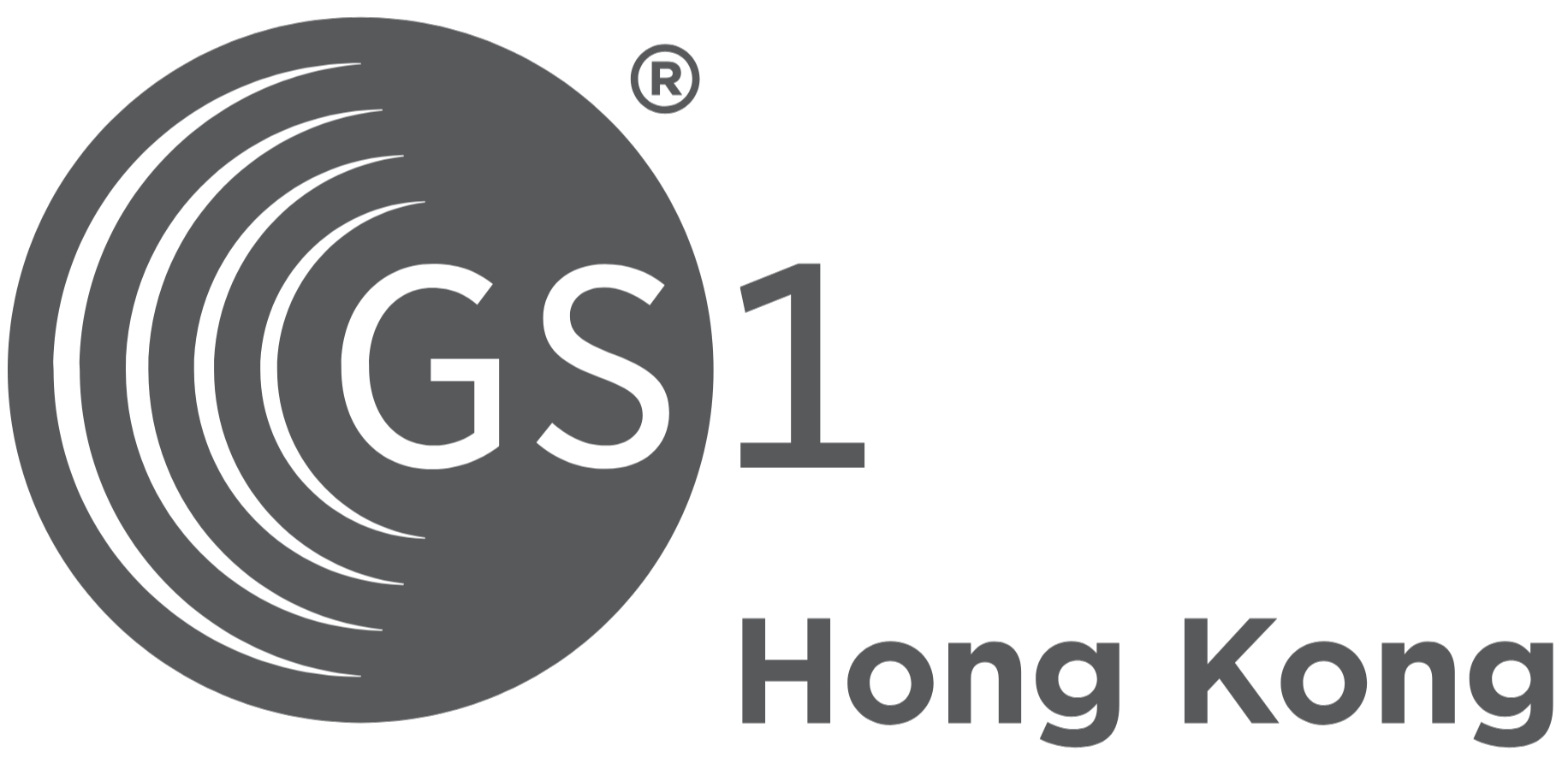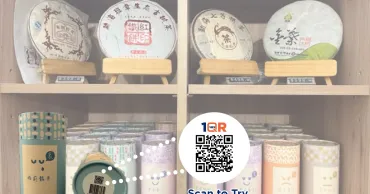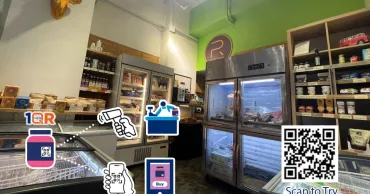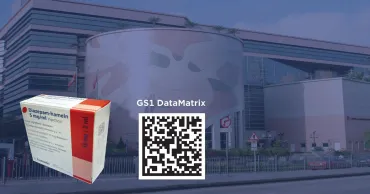How to Get a GS1 HK 489 Barcode for Your Product? When you Need to Apply New Barcodes on Products?
Are you looking to get GS1 barcodes starting with “489” for your products? GS1 Hong Kong is the only organisation authorised by GS1 to issue GS1 barcodes (GTINs) in Hong Kong. Each barcode is globally unique, helping you list your products more easily on retail shelves and online platforms, while also enabling real-time inventory management.
But it’s not just new products that require a barcode. There are other scenarios where assigning a new GS1 barcode is necessary — and understanding when to do so is key to keeping your supply chain running smoothly. Learn more about when you need a new barcode, how the “489” prefix works for Hong Kong products, and how to get your products to market faster with our guide.
Basic Knowledge about GS1 489 Product Barcodes
After purchasing products for checkout at supermarkets, the staff will scan GS1 barcode on products with a barcode scanner. The retail POS system can thereby obtain accurate product information and product price, offering consumers with accurate and convenient shopping experiences. Let’s take a look on products with GS1 barcodes around you, you will find the following features of barcodes:
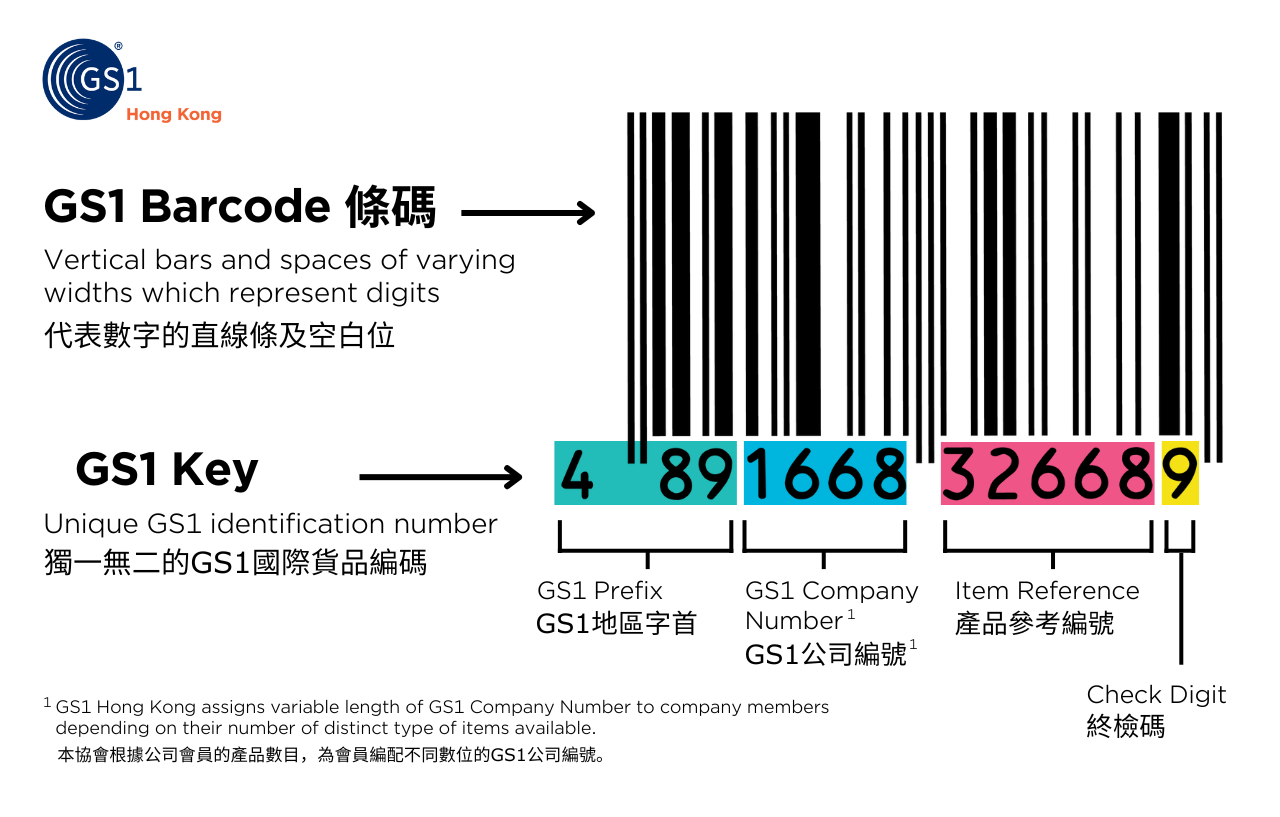
GS1 Key: Unique GS1 identification number
- Quiet zones(clear spaces before the first bar and after the last bar)
signal barcode readers when to start and stop decoding. - GS1 Prefix (i.e. the first 3 digits of barcodes)
assigned by the GS1 member organisation that allocated the barcode number. GS1 barcodes can only be issued by GS1 Hong Kong in Hong Kong, and start with “489”. - GS1 Company Number and Item Reference
- Companies with less than 1,000 trade items: assigned a 6-digit GS1 Company Number
- Companies with 1,001 - 10,000 trade items: assigned a 5-digit GS1 Company Number
- Companies with more than 10,000 trade items: assigned a 4-digit GS1 Company Number - Check digit
Ensure the data integrity of barcode number, so the barcodes can be scanned and data can be captured accurately.
When Do You Need to Assign a New GS1 489 Barcode to a Product?
A unique product barcode must be assigned when launching new products. Additionally, you need to assign a new GS1 “489” product barcode to existing products in the following situations:
1. Change in Ingredients/ Components
If there is a change in the ingredients or formulation, a new “489” product barcode is required. For example, if a product’s sugar content is reduced by about 50%, and became a “low-sugar” food, another product barcode is needed.
2. Change in Dimensional or Net Content
Any changes (increase or decrease) on the dimensions of a trade item or the weight, volume, or quantity, a new “489” product barcode needs to be assigned. For example, if the product packaging material is changed from a transparent plastic bottle to glass bottle, resulting in a 20% increase in weight, or if the net weight of a packet of biscuits increases from 600 grams to 690 grams, or if a toothbrush pack quantity reduces from 6 to 5.

3. Same Style but in Different Colors/Sizes
If a clothing item of the same style is produced in different sizes and colors, each variation in style, color, or size is considered a different product. Therefore, a different GS1 489 product barcode is required.

4. Change in Packaging for a Promotional Product
If there’s change in product packaging in seasonal events such as special holiday promotions, or limited-time offers, such as featuring a Christmas tree design, adding promotional messages, or with complimentary items, a new product barcode must be assigned.

5. Change in the Printed Product Price on Packaging
If a brand prints the product’s price on the packaging and the printed price changes, a new product barcode is needed for the product. Therefore, it is not recommended to print the retail price directly on the packaging.

For inquiries about the application and allocation of GS1 Hong Kong 489 barcodes, please contact us. In addition, we also offer FREE barcode & digital workshops, barcode symbol testing & membership enquiry services.
Are Barcodes only Required on Products? Which industries also need to apply for GS1 Barcode?
Regardless of where the products were manufactured or sold, brand owners selling product shall get barcodes from GS1. Therefore, manufacturers, suppliers, retailers, and even wholesalers who redesign and repackage imported products can all contact us to get a GS1 product barcode with product prefix “489”.
GS1 offers various GS1 barcodes powered by GS1 Standards. In addition to GS1 barcodes widely used on products, different industries can also apply GS1 barcodes for unique identification of products & logistics, which can be used in retail stores and supply chains to enhance logistics efficiency & supply chain traceability, or even to meet regulatory requirements.
GS1 barcodes used by various industries:
1. Retail and Consumer Packaged Goods (CPG)
GS1 Product barcodes facilitate the accurate identification of products, so product price & information can be accurately captured by barcode scanner & retial POS system for inventory & sales management. Major global e-commerce platforms also require merchants to provide GS1 barcodes (GTIN, Global Trade Item Number) when listing products to effectively manage products and enhance consumers’ shopping experience.
2. Food & Food Services
GS1 2D barcodes can be used for food management. For example, GS1 DataMatrix can store product batch numbers, expiration dates, weights, and other relevant information. In the event of a food safety incident, manufacturers can leverage the barcode for food recalls.
3. Healthcare
The GS1 barcode (GS1 2D barcode) can store information about an item's batch number and expiry date. Utilizing the GS1 2D barcode can ensure patient safety by identifying and capturing data on medicine, medical devices, vaccines etc.
4. Transport & Logistics
GS1 barcodes (GS1-128 and ITF-14) powered by SSCC (Serial Shipping Container Code) can be used for identifying logistics unit to track product & information flow. This empowers businesses to obtain visibility of product information at every location, including the point of production, sales points, return points, and any other relevant locations.
3 Steps to Get a GS1 Barcode for Your product
GS1 Hong Kong is the only authorised organisation in Hong Kong to issue globally recognised GS1 barcodes such as UPC, EAN, and GTIN. The application process is straightforward — just three simple steps to obtain a unique, internationally accepted product code for your items. We also offer barcode testing services to ensure your product can be accurately scanned.
Step1. Complete the Application Form
To acquire barcodes from GS1 Hong Kong (GS1 HK), it is necessary to first register as a GS1 member. Please click “Apply Now” and submit it for processing. If you have questions about your company’s eligibility, or want to know your application status, or need assistance navigating the process, please fill out our enquiry form, call us at 2863 9701, or WhatsApp us at 5122 7144.
Step2. Prepare the Required Documents
To apply for barcodes from GS1 HK, you will need to submit the following four documents:
- A completed online application form
- A copy of your company's Business Registration
- A proof of employee headcount, which may include employee insurance documentation or an MPF certificate
- A payment receipt
Step3. Submit and Await Approval
The application process for obtaining barcodes from GS1 HK is generally straightforward. After you submit your application along with the necessary documents, you can expect processing to take approximately 3 to 5 working days. Upon approval, you will receive a unique GS1 Company Prefix, enabling you to generate barcodes for all your products anytime using our user-friendly BarcodePlus platform.
After obtaining your GS1 barcode, you can apply it to your product packaging. We recommend submitting your barcode for testing before mass printing to ensure it can be scanned and read properly at retail checkouts.
Enquiry
GS1 Barcode Frequently Asked Questions
Why do brand owners need to apply for barcode starting with the prefix 489 for the Hong Kong region?
Hong Kong brands and products have always been known for their quality and safety. Product barcodes starting with the prefix "489" are issued by GS1 Hong Kong, indicating products are handled & managed by companies registered in Hong Kong. This in turn helps build consumer confidence both locally and overseas and enhances the brand image of the companies.
Can different products have the same GS1 489 product barcode?
No, they cannot. Each GS1 barcode is unique and cannot be duplicated. Even for the same style of sneakers, if the shoe size or color differs, they are considered as different products and each will be assigned with different GS1 product barcodes.
This is also why it is necessary for companies to apply for GS1 489 barcodes only from GS1 Hong Kong, as unauthorized barcodes issued by non-GS1 organisations can be expired, transferred, counterfeited or even duplicated with other products in the market. This may result in a lawsuit or even financial losses.
Is it only products manufactured in Hong Kong can apply for GS1 product barcodes starting with "489"?
No. GS1 prefix only indicates which GS1 member organization issued that barcode. GS1 Hong Kong is the only authorized to issue GS1 barcodes starting with the 489 prefix in Hong Kong. Therefore, regardless of where the products are manufactured, as long as you have a registered company in Hong Kong, you can become a GS1 HK member and get a GS1 489 barcode for your products.
Related Blogs
- What is GTIN? Make Best Results of Your Google Shopping Ads
- Is there any risk in using barcode generators to obtain barcodes?
- How to Get a GS1 HK 489 Barcode for Your Product?
- How to choose GTIN/EAN/UPC barcodes for products?
- A Beginner's Guide to Getting GTIN, EAN, UPC Barcodes in Hong Kong
- How many GTINs do You Need?
- Easily Check Your Products Using GS1 Barcodes
- What is GS1 HK’s “1QR”? A Guide to the Next-Generation QR Code
- Choosing the Right Barcode: GS1 Barcode vs. Unauthorised Options
- What is a 2D Barcode? Why Businesses Should Prepare for GS1’s Sunrise 2027
Success Cases
The Chinese government has been promoting traceability for key industrial products,…
Kao, a brand that has entered Hong Kong market for more than 50 years, has been…
As demand spiked for household cleaning products fuelled by the COVID, SWIPE’s…
